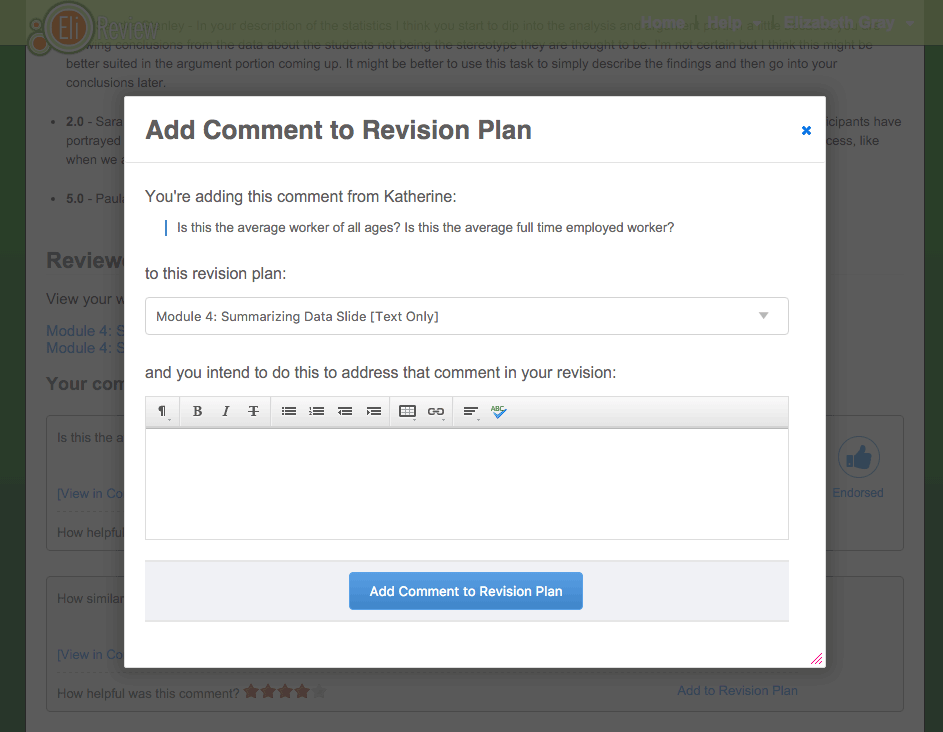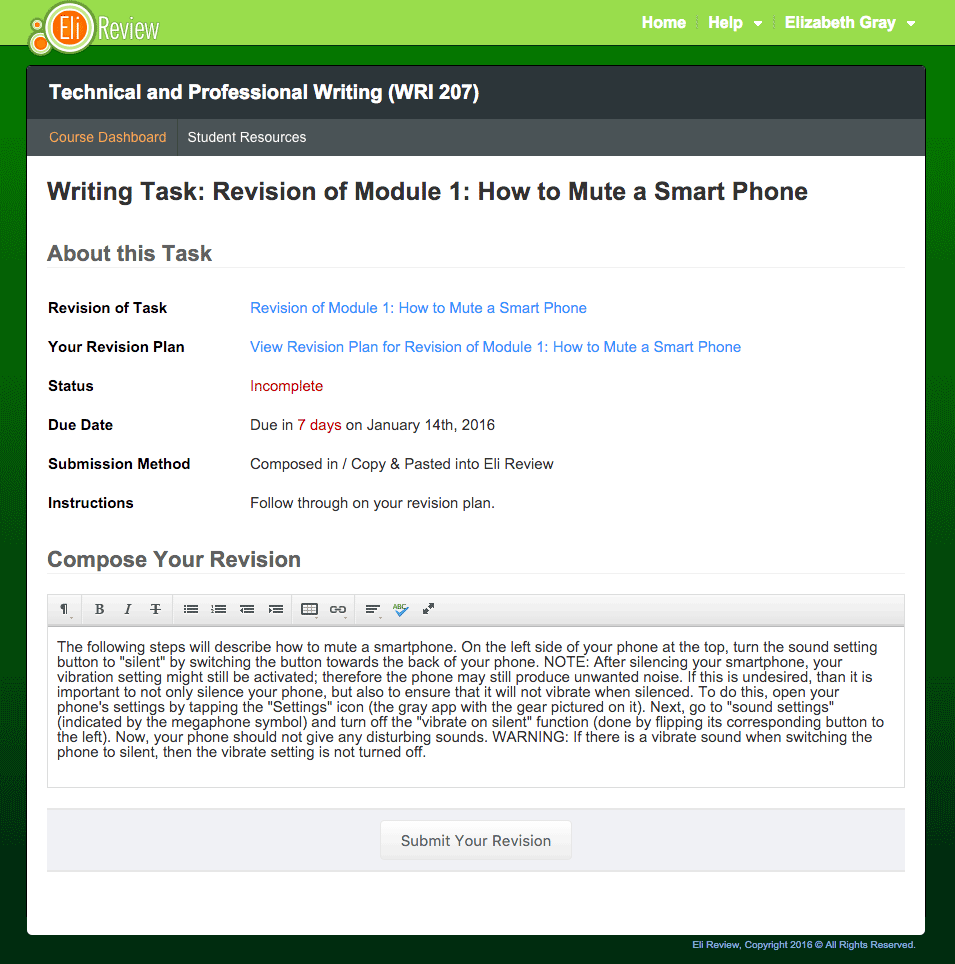Revision takes planning and execution. In Eli Review, Revision Tasks ask writers to improve the submitted Writing Task using the feedback they received during a Review Task.
There are two types of Revision Tasks –
Revision Plans are a tool for writers to plan out their revision before they begin writing it. They are useful for helping to develop a clear improvement strategy that guides the revision process, but also so that instructors can discuss strategies with writers beforehand to make sure that the writer is on the right course. That’s important – revision plans not only help writers be more efficient and effective in their revision but plans also help instructors coach writers.
When: Writers can begin planning a revision immediately after submitting a writing task. Writers can prepare a Revision Plan even without the instructor requiring them to prepare one.
Where: The Revision Plan for any writing task can be accessed from two different places. First, a link to the revision plan for a writing task is displayed next to the name of that task in the “Tasks and Reports” table on the course homepage. Second, there are links to a writing task’s revision plan inside review reports where that writing was reviewed.
When a writer completes a writing task, Eli automatically creates an empty revision plan. The writer, then, is responsible for filling that plan with specifics on how they’ll revise that writing.

There are two ways to add content to revision plans:
Additional Revision Notes: you can add free-form notes using this tool. You can write paragraphs, use bulleted lists, even link to resources on the web that will be important to a revision.
Reviewer Feedback: writers can click “Add to Revision Plan” for any comment they received from reviewers to build their revision plans.

When adding a comment to a revision plan, writers have several options:
Once you click the “Add to Revision Plan” button, that comment (as well as any edits and notes you made) will be added to revision plan. As you add more feedback to your plan, it will begin to take shape:
Feedback is added sequentially – that is, new comments are added to the bottom of the list. However, you can put comments in order from highest to lowest revision priority by clicking on the comment number and dragging or by clicking “move” then selecting the position. You’ll see the comments reorder as you drag.

Writers can create revision plans even if they aren’t assigned one by an instructor. However, if instructors assign students to create a revision plan as part of a revision task, students will be prompted to “share” their revision plan with the instructor:

Writers can continue to update their revision plans even after they’ve shared it with an instructor; the instructor will see all of those changes.
Instructors may comment on revision plans; if there is an instructor note, it will appear under the “Additional Revision Notes” section. Once instructor feedback is posted, the student will see a blue person icon on their dashboard for the revision plan tasks, indicating that feedback is available.
Keep the following ideas in mind while you revise:
There are of course any number of ways to use revision plans, but these general tips should help in most situations.
A Revise & Resubmit Task asks writers to create an updated version of an existing writing task. This is usually preceded by preparing a revision plan, but not always.
The Revise & Resubmit Task looks strikingly similar to a writing task:

Though there two very important differences between revise & resubmit tasks and writing tasks:
While there are those distinct differences between revision and writing tasks, there are important similarities to keep in mind:
Once you’ve submitted your revision, you’ll have completed the Write–Review–Revise cycle. Your instructor may choose to have you go through another cycle with your revised writing, but then you’ll already know the drill.